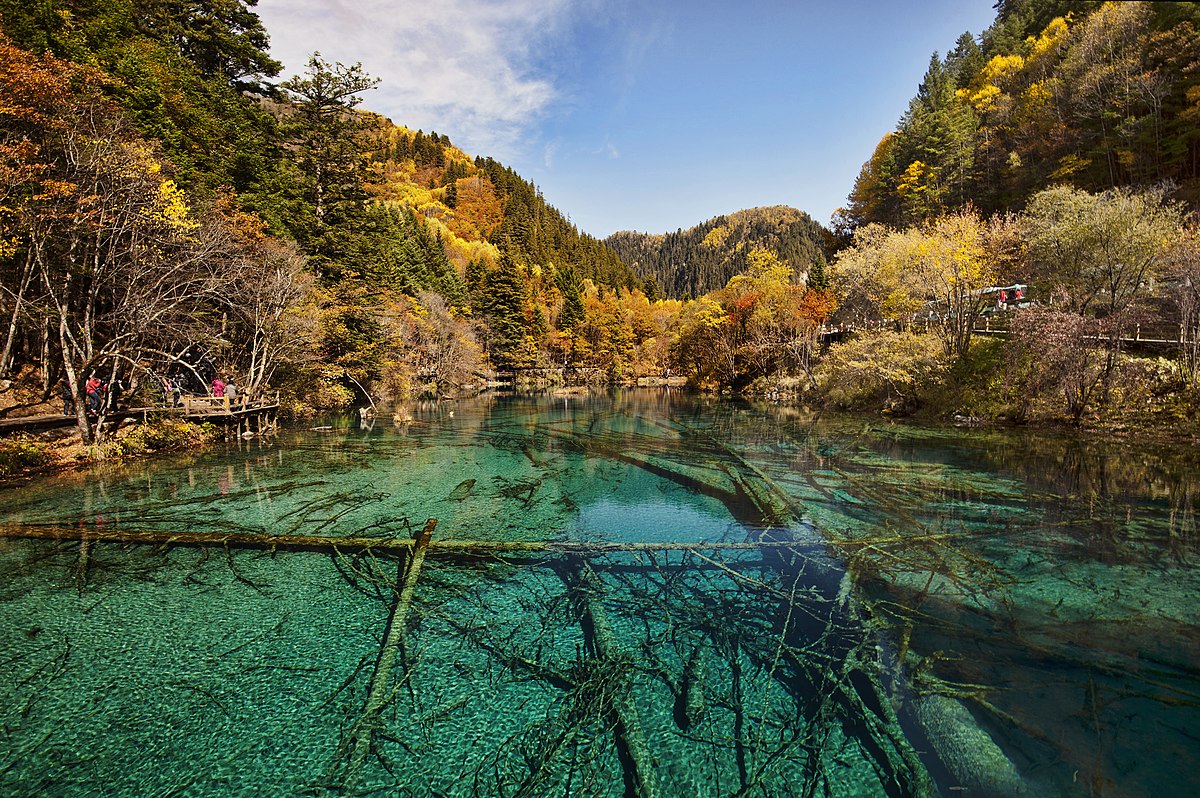
Why is the Water in Jiuzhaigou Blue?
Jiuzhaigou, a nature reserve and national park located in Sichuan, China, is world-renowned for its stunning scenery, which includes multi-level waterfalls, colorful lakes, and snow-capped peaks. One of the most captivating features of this region is the vibrant blue color of its lakes. But what exactly gives these waters their unique hue? The answer lies in a delicate balance of geological formations, mineral content, and the interplay of light.
Karst Geology and Water Clarity
Jiuzhaigou's lakes are primarily formed within a karst landscape. Karst topography is characterized by soluble rocks, such as limestone, which dissolve over time due to the action of slightly acidic water. This dissolution process creates sinkholes, caves, and underground drainage systems.
Here's how the karst landscape contributes to the blue waters:
- Natural Filtration: The water in Jiuzhaigou undergoes extensive natural filtration as it percolates through the layers of porous rock. This removes suspended particles and impurities, resulting in exceptional clarity.
- Mineral Content: The dissolved limestone releases calcium carbonate into the water. This mineral contributes to the water's turquoise hue by scattering light, particularly in the blue part of the spectrum.
Phosphorus: A Limiting Factor for Algal Growth
While clear water is essential for the blue color, the presence or absence of certain elements plays a critical role as well. In the case of Jiuzhaigou, phosphorus emerges as a key factor.
- Phosphorus Limitation: Studies have revealed that phosphorus acts as the primary limiting nutrient in the lakes of Jiuzhaigou. This means that the availability of phosphorus is relatively low compared to other nutrients essential for the growth of algae and phytoplankton.
- Impact on Algal Blooms: Algae and phytoplankton are notorious for giving water a greenish or murky appearance. When phosphorus is limited, their growth is restricted, preventing them from clouding the water and obscuring its blue hues.
The Role of CDOM and Nitrogen-to-Phosphorus Ratio
Dissolved organic matter (CDOM) and the ratio of nitrogen to phosphorus further contribute to the vibrant blue of Jiuzhaigou's waters:
- Low CDOM: CDOM, composed of decaying organic matter, can absorb sunlight, particularly in the blue and green wavelengths. Jiuzhaigou's lakes generally exhibit low CDOM concentrations, allowing blue light to penetrate deeper and scatter back to the surface.
- High Nitrogen-to-Phosphorus Ratio: A high nitrogen-to-phosphorus ratio further limits the growth of certain types of algae that prefer a more balanced nutrient supply. This contributes to the overall clarity and blueness of the water.
The table below summarizes the factors influencing the water color in Jiuzhaigou:
| Factor | Influence on Water Color |
|---|---|
| Karst Geology | Natural filtration for clarity, calcium carbonate scattering blue light |
| Low Phosphorus | Limits algal growth, preventing a greenish hue |
| Low CDOM | Minimizes absorption of blue light, enhancing its scattering |
| High Nitrogen-to-Phosphorus Ratio | Further restricts specific algae growth, promoting clarity |
The Scattering of Light
The intense blue color we observe is a result of how light interacts with the water molecules and suspended particles:
- Sunlight Enters the Water: When sunlight strikes the water's surface, it gets scattered and absorbed.
- Blue Light Scattered: Water molecules scatter blue light more efficiently than other colors in the visible spectrum. This is similar to why the sky appears blue.
- Reduced Long-Wavelength Reflection: The low CDOM and high nitrogen-to-phosphorus ratio minimize the reflection of longer wavelengths like red light, further enhancing the blue appearance.
Conclusion
The captivating blue of Jiuzhaigou's waters arises from a complex interplay of geological processes, light scattering, and a delicate balance of nutrients. The karst landscape provides a foundation of clarity, while the limited phosphorus availability and low CDOM levels enhance the scattering of blue light, creating a breathtaking spectacle of nature.
Q&A
Q1: Can the color of the lakes in Jiuzhaigou change?
A1: Yes, the intensity and shade of blue can vary depending on the time of year, weather conditions, and the angle of sunlight. Factors such as rainfall, snowmelt, and the amount of suspended sediment can slightly alter the water's clarity and color.
Q2: Are there other lakes in the world with a similar blue color?
A2: Yes, other lakes formed in karst regions or with similar water characteristics can also exhibit vibrant blue colors. Some examples include Crater Lake in the United States and Peyto Lake in Canada.
Q3: Is there anything being done to protect the water quality in Jiuzhaigou?
A3: Yes, Jiuzhaigou is a protected area with strict regulations in place to preserve its natural beauty. This includes measures to control pollution, limit human impact, and monitor water quality.